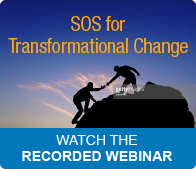"Reinforcement" and "Reinforcement Plans" are terms that are thrown around a lot in change management. Sure, we know that reinforcement is important, but what does a good reinforcement plan really look like? 
If you're a Change Agent assigned to implement transformational change-- whether that is Shared Services, an integration following M&A, or new systems and processes, you can take the principles we know about reinforcement of new behaviors, and translate those principles into a cohesive tactical reinforcement plan. The reinforcement plan becomes a "change management deliverable" that is modified and adapted for each of the Target groups impacted by the transformation.
5 Key Principles for Reinforcement
Let's start with an important assumption--reinforcement only works when you have a clear definition of the new behaviors you are seeking in the future state. Otherwise, you may or may not be reinforcing the "right stuff."
What we know about reinforcement can be summarized in the following conclusions:
1. Performance Management
Superior performance is gained through managing all aspects of the relationship between manager and direct report. This is more than the formal performance appraisal process, and goes beyond the assumptiion that each employee should motivate him or herself.
2. Reinforcement is from the Frame of Reference of the Individual
You probably won't find a single reinforcement that motivates everyone. For any reinforcement to impact behavior it must have meaning or value for the individual you are trying to motivate.
3. Immediacy of Reinforcement
Reinforcements have to be applied as soon as possible following the behavior, and must be directly connected to that behavior.
4. Positive vs. Negative Reinforcement
For maximum acceleration, risk-taking, and innovation, employees must perceive there will be a higher likelihood of positive consequences for at least attempting to achieve results, versus negative consequences for making mistakes.
5. Informal Reinforcement
Change Agents should focus on working on the application by Sponsors of daily informal reinforcements to motivate for superior performance.
Application of the Principles
With these principles in mind, Change Agents can break down Target groups (those groups most impacted by the change) and develop a simple matrix for identifying appropriate reinforcements.
For each audience, your matrix should including:
1. The name of the Target Group
2. The specific human objectives for this Target Group (what would you observe in the future state that is different from what you see now.)
3. Potential reinforcements for that Target Group, include
-rewards
-negative consequences
-how to make the new way easier to adopt
-how to make the old ways more difficult to continue to sustain
This matrix can then be a guide for discussion between the Change Agents and Reinforcing Sponsors. Remember that individuals' motivations do change over time, so you can't assume they will remain constant for the life of the transformation.
While there are always some people who will have the intrinsic personal motivation to drive performance, that isn't true of everyone.
The AIM Targeted Reinforcement Tool
Another way to promote reinforcement is by using carefully targeted reinforcers that are identified by using the AIM Targeted Reinforcement Tool (TRI.)
This tool is designed to promote open and frank discussion about reinforcement between the manager and his direct report. One TRI is used for every manager/direct report relationship, and can be completed:
- when a new direct report relationship starts
- in conjunction with a formal performance appraisal
- after any major change in the individual's personal or work situation
- as a periodic evaluation tool
By following the key principles of reinforcement, and by applying them throughout the transformational change on an ongoing basis, Change Agents will be much more likely to get the desired behaviors sustained for the long-haul.


